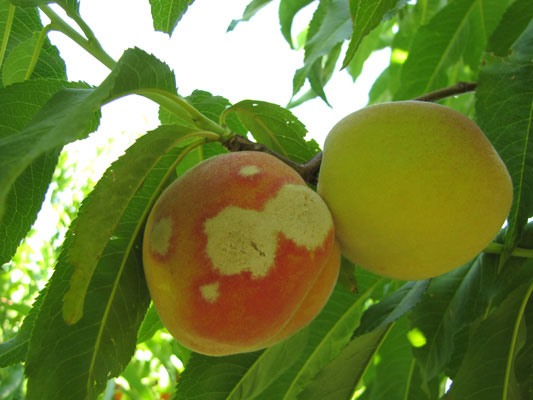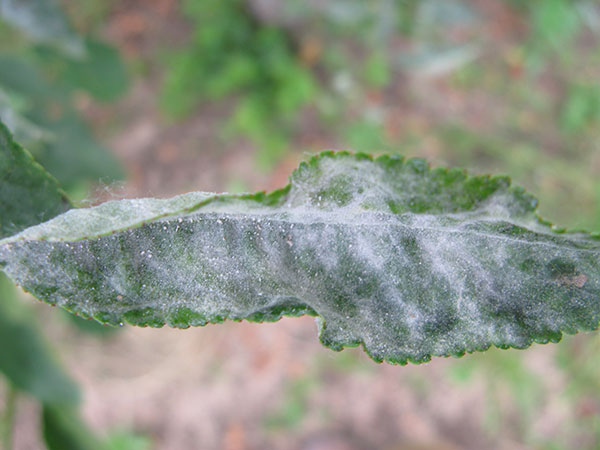Powdery Mildew
HOSTS
- Berries
- Cherry
- Grape
- Peach/Nectarine
DESCRIPTION
Powdery Mildew can affect most fruit trees, attacking leaves, flowers, and fruit. The most noticeable sign is a white powdery residue, which is a mixture of the fungal mycelium and spores. Certain apple varieties (Jonathan, Idared, Gala, Jonagold, Winesap, Rome), most cherry varieties, and grapes are susceptible. Peaches and other berry crops may also be affected in years of moisture and humidity. Infections begin in late spring, during warm days, cool nights, and some form of moisture. The spores are spread by wind, dripping dew, rain, and irrigation.
BIOLOGY
Powdery mildew is caused by several different fungi that form a greyish-white powdery coating on terminal shoots and leaves. It also may form a network of lines (russet) on the skin of apple fruits if the fruit are infected at relatively early stages of development. The powdery mat consists of fungal strands and spores which are microscopic in size. Because the spores are extremely numerous and easily spread by wind, many infections can occur over the season. Thus the disease can become widespread and increasingly destructive.
SYMPTOMS
- Yellowing or distortion of leaves
- Stunted shoot growth
- Reduced yield
- White powdery residue, which is a mixture of the fungal mycelium and spores on leaves and fruit.
GENERAL MANAGEMENT
- Most trees can tolerate light infections
- Rake and remove all leaves and debris in fall (not as important for apple, as the fungus survives the winter on living twigs)
- Fungicides work as a preventive, and must be applied prior to infections. They will not “cure” infected tissue
- Pruning affected twigs may also be helpful
- Plant fruit varieties resistant to powdery mildew
- Control sprays should be applied from prebloom/early bloom to cessation of terminal shoot growth if infections are found on susceptible trees
Monitoring: On apple trees, watch for newly emerging shoots that have the white mycelial coating. Continue checking weekly, until growth hardens off. On cherry trees, monitor leaves on suckers and spurs arising from lower parts of main scaffold limbs just above limb crotches for small, roundish mildew spots beginning at early bloom. Black Tartarian, Bing, Ranier, and Lapins sweet cherry and Montmorency tart cherry are highly susceptible to mildew. On other crops, start monitoring for mildew a few weeks after bloom.



